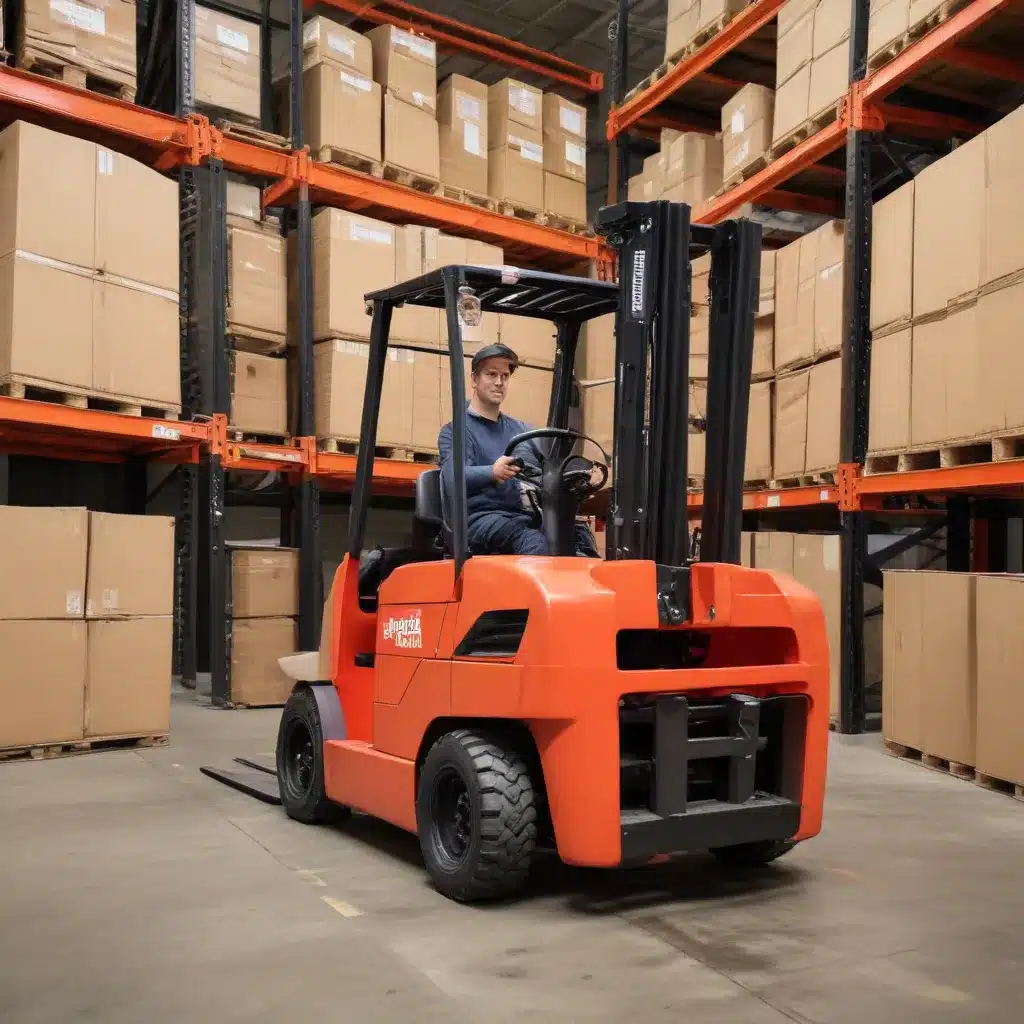
Understanding and Mitigating Forklift Risks
Forklifts are indispensable tools in various industries, from warehousing and logistics to manufacturing and construction. However, the power and versatility of these vehicles also introduce significant safety risks that must be proactively addressed. Forklift accidents can result in severe injuries, property damage, and even fatalities, making forklift safety a paramount concern for any organization relying on these machines.
As a seasoned industry expert, I understand the importance of fostering a culture of safety in forklift operations. In this comprehensive article, I will share practical strategies and insights to help operators enhance their safety practices, stay compliant with regulations, and maintain a secure working environment.
Comprehensive Operator Training and Certification
The foundation of forklift safety lies in the thorough training and certification of operators. OSHA’s 29 CFR 1910.178 standard mandates that all forklift operators receive formal training, covering both theoretical knowledge and hands-on practical skills. This training should educate operators on the mechanics of different forklift models, proper handling techniques, load capacity considerations, and emergency procedures.
Additionally, operators must be evaluated and certified by a qualified instructor at least once every three years to ensure they maintain their proficiency. Recertification not only reinforces safe practices but also keeps operators up-to-date on the latest industry regulations and technological advancements in forklift safety.
Comprehensive Forklift Inspections and Maintenance
Conducting regular and comprehensive forklift inspections is a critical safety measure. At the start of each shift, operators should follow a detailed checklist to thoroughly examine the forklift’s functionality, including brakes, steering, control mechanisms, warning devices, and the integrity of forks and tires. Integrating digital checklists and maintenance alerts can help streamline this process and ensure consistent adherence to safety protocols.
Beyond daily inspections, proactive maintenance is essential for forklift safety. Adhering to a regular maintenance schedule, which includes servicing major components like brakes, lift mechanisms, and electrical systems, helps prevent mechanical failures that can lead to accidents. Leveraging forklift fleet management solutions can provide automated reminders and logs, ensuring that maintenance is consistently performed and documented.
Forklift Operator Awareness and Vigilance
Operators must maintain constant awareness of their surroundings and the potential risks associated with forklift operations. This includes recognizing hazardous situations, such as operating on uneven surfaces or in congested areas, and anticipating potential dangers.
Integrating advanced forklift safety and collision avoidance systems can greatly enhance operator awareness and proactive risk mitigation. These systems provide real-time alerts, warning operators of impending dangers like nearby pedestrians or other forklifts, enabling them to respond quickly and prevent accidents.
Forklift Speed Control and Pedestrian Awareness
Controlling forklift speed is a critical aspect of safe operation, particularly in areas with pedestrian traffic or tight spaces. Operators should be trained to adjust their speed based on the environment and load conditions, allowing for adequate reaction time to avoid collisions.
Leveraging zone-based speed control technology can further enhance safety by automatically reducing forklift speed in designated high-risk areas, such as pedestrian crossings or congested zones. This approach helps prevent accidents by limiting the forklift’s speed and providing visual and audible warnings to both operators and pedestrians.
Forklift Load Capacity and Stability Considerations
Adhering to a forklift’s load capacity is essential for maintaining stability and preventing accidents. Operators must be trained to understand and respect the load capacity of their forklifts, which involves checking the data plate for maximum weight limits and ensuring that loads are balanced and safe to operate.
Keeping the forklift tines low to the ground while traveling is another fundamental safety practice that enhances stability and reduces the risk of tipping over. Operators should be trained to only raise the forks for loading or unloading purposes, with sensor-based alerts reminding them to maintain the proper tine position during transit.
Workplace Layout and Forklift Traffic Management
The design of the workplace layout plays a crucial role in forklift safety. Clearly marked pedestrian walkways, forklift lanes, and crosswalks help segregate foot traffic from forklift operations, reducing the risk of collisions.
Advanced visual signaling solutions, such as projector lights and LED traffic management systems, can enhance communication and traffic management within the facility. These systems provide clear, versatile signaling options to indicate pedestrian and forklift pathways, improving safety and efficiency.
Integrating Advanced Forklift Safety Technologies
Implementing forklift safety solutions specifically designed for industrial environments can dramatically enhance safety standards. These technologies include collision avoidance systems, automatic slow-down features, and operator alertness monitoring.
Forklift safety solutions like those offered by Trio Mobil can provide advanced collision avoidance capabilities, alerting operators of impending dangers and enabling proactive risk mitigation. Additionally, operator access control systems can restrict forklift operation to only trained and authorized personnel, further elevating safety standards and increasing overall efficiency in the workplace.
Cultivating a Safety-First Culture
Ultimately, creating a safe work environment for forklift operations requires a holistic approach that combines proper training, adherence to regulations, regular maintenance, and the integration of advanced safety technologies. By prioritizing forklift safety and fostering a culture of vigilance and proactive risk management, organizations can significantly reduce the potential for accidents and protect the well-being of their employees.
The strategies outlined in this article provide a comprehensive framework for enhancing forklift safety and promoting a safer, more efficient work environment. By implementing these best practices and leveraging innovative safety solutions, organizations can ensure their forklift operations are not only compliant with industry standards but also optimized for the highest levels of safety and productivity.
For more information on how to enhance your forklift safety and efficiency, I encourage you to visit the Forklift Reviews website and explore the wealth of resources available. Together, we can create a safer and more secure workplace for all.

